Philippines 2020-2024 Census as of 1 July 2024 is Released. Annual Population Growth Has Halved from 1.63% in 2015-2020 to 0.8% in 2020 - 2024. This Decline Heralds In-Motion Population Collapse.
The census-based population increase since 2020 is 26.2% higher than a vital statistics computation-based increase raising concerns on completeness of PSA routine vital statistics data reporting.
The Philippines Statistics Authority has released the 2024 Census (16th National Census), results today, after their certification by the President.
The Philippines population is reported to be 112,729,494 as of 1 July 2024. This is a 3.4% increase (3,649,141 persons) since the 2020 Census which reported the population to be 109,035,343 as of 1 May 2020.
The 2024 population count demonstrates a sharp decline in population growth since prior census periods, with annual population growth at about 0.8%.
Overall, and by-region breakdowns are accessible from files attached to report. Highest annual population growth was in BARRM at +3.43%, while the lowest was in Bicol which had -0.07% growth.
All regions other than BARRM showed declining population growth since the prior census.
Population Calculation Based on Vital Statistics
Using the 2020 population census as the basis, expected Philippines population was calculated based on final PSA reports from 2020 to 2023, and provisional PSA VS data to June 2024. This was compared with the Census data and showed:
2024 Census showed an average monthly population increase of 73,883 persons (886,594/year, or 3,694,141 across the census period between 2020 and 2024).
PSA showed an average monthly population increase of 58,540 persons (702,480/year and 2,927,038 in total between the census-equivalent periods from 2020 and 2024).
The 2024 Census estimated the population is 767,103 larger than could be derived from the published vital statistics data, a 26.2% difference.
2024 Census average annual population growth (2020-2024) was 0.8%
vital statistics derived annual population growth (2020-2024) was only 0.64%
An annual average population growth of < 1% is already approaching stagnant growth. Consider also that the Philippines is exporting over a million persons a year to work abroad and/or emigrate permanently.
Migration Impacts
Could the difference of 767,103 in the census be due to immigration / emigration impacts? This is a very complex question. Immigration (people moving to the Philippines) includes returning Filipinos who had previously emigrated, foreigners entering for work or marriage, and refugee or other inward migrants. Emigration covers people leaving permanently. The OFW category are people leaving temporarily Emigration + Deployed OFW are surely far higher than Immigration, and thus, the Census data would be expected to show lower population increase than that of the Statistics Authority computation which is solely based on natural population increase.
Emigration Statistics
Emigration (people leaving Philippines) covers those leaving permanently for another country. I found data up to 2022 for this from the Government Commission on Filipinos Overseas. There are nearly 11 million registered overseas Filipinos, and possibly many more unregistered. While emigration dropped sharply in 2020, it had recovered to around 41,000 departing Filipinos a year by 2022 and I would expect that it has increased considerably by 2024.
Taking just Australia as an example, Filipino immigrants increased from 294,160 in 2019 to 394,380 in 2024, a gain of 100,000 population to Australia and a loss of 100,000 population to the Philippines.
Prior annual emigration was as high as 92,998 at its peak in 2014. In conclusion, there was no major drop in emigration as of 2024, and this cannot explain the discrepancy between Census and PSA Population Counts.
US Immigration Policy Impacts
I cannot find any fixed numbers on how many overseas Filipino might have returned to the Philippines due to new US immigration policies on undocumented migrants. It is estimated that there are around half a million undocumented Filipinos in the US. Small numbers (24) have been deported by 2025 as reported in Philippines news. Others may have returned voluntarily, but I consider that most who have made their lives in the US will wait to be forced to leave, rather than to leave voluntarily. This certainly cannot explain the discrepancy.
Overseas Foreign Workers Statistics
These are Filipinos who leave the Philippines for work opportunities abroad and are covered by and registered with the Department of Migrant Workers (DMW). Some OFW may not be registered.
Official provisional 2024 data from DMW shows a historical high of 2.474 million deployed OFW of whom 378,444 were new hires, and an increased deployment of 1.94 million Filipinos since 20201. This is evidence of a robust recovery in deployment of OFW. Outgoing Filipinos should reduce the Census population, not increase it vs. PSA birth-death data.
Natural Population Change
The Census data is a snapshot in time. It only gives indication of gross trending. Due to the pandemic 2000 to 2024 has been a very atypical period. It is necessary to look at year-by-year trending. Following figure plots average monthly births, deaths, and natural population change from 2015 to 20242.
To compare 2020 and 2024 Vital Statistics Data:
2020 average monthly natural population change (births - deaths = growth) was 76,229.
2024 (provisional) average monthly natural population change was 46,760.
The loss of population growth between 2020 and 2024 is 38.7%.
The loss of population growth is contributed by rising deaths (2024 average monthly deaths are 11.6% higher than 2020 average monthly deaths) and falling births (2024 average monthly births are 18.5% lower than 2020 average monthly births).
As births are rapidly falling, while deaths are slowly rising population growth will continue to decline.
The accelerating birth declines in the Philippines mirror those observed in all countries which took Covid-19 vaccines.
The Philippines should not be having major birth declines yet. and certainly not at the observed rate, because the majority of the population is well within reproductive years; median population age is around 26, median age of women giving birth in 2023 was 28.
Impacts of Emigration and OFW Deployment on Philippines Population
Using the census period between 2020 and 2024, the PSA reported 5,964,986 births and 3,019,948 births. Using annual data from government, between 2020 and 2024 there were 1,924,356 new OFW deployed and at least 150,000 emigrants3.
Considering births - deaths - emigration, the Philippines population growth is reduced to 2,772,478. If population loss due to increased OFW deployment between 2020 and 2024 is included, population growth by 2024 is reduced to only 848,122 persons between 2020 and 2024. There will be additional uncounted losses from undocumented migrants.
Could the effective population of the Philippines in 2024 be only 109.9 million?
I suggest that the Philippines population has likely already stagnated and will contract in coming years with reduced births and increased outwards permanent and temporary migration.
Philippines peak birth year was 2012.
Vital Statistics data shows rapidly changing demographics with rising deaths and falling births.
Average monthly births have fallen by 30% between 2012 and 2024 (149,197 vs 103,846).
The largest year-on-year drop comes from 2023 to 2024 which has a 14% loss in still provisional data (may improve marginally with late registrations).
When emigration and OFW deployment is accounted, the Philippines population has likely reached its peak in 2024. Population contraction will follow.
The Philippines is facing imminent population collapse!
Global Organizations Grossly Overestimate the Philippines Population
Global organizations have grossly overestimated the Population of the Philippines. Such population data needs to be viewed very critically and should not be used for sensitive planning decisions:
Worldometer puts PH population at the end of 2024 at 116.8 million with an annual population growth of 0.83%. Their estimate is 3.5% higher than the Philippines census-based population.
Macrotrends puts the 2024 population at 119.1 million in 2024, with an annual population growth of 3.67%. Their estimate is 5.7% higher than the Philippines census-based population.
OWID didn’t agree with 2020 census population and has not updated their site with 2024 data yet. OWID provided 2020 population was 2.8% higher than the 2020 Philippines Census population.
Media Article Regarding Census Release
Office of the President attributes the slowing of population growth to declining fertility and birth rates, elevated pandemic mortality, and subdued migration4!
Nations need to plan for declining population, for depopulation, for planned and organized population contraction / desettlement without chaos / anarchy.
Population collapse is already in motion. It will be difficult to arrest this trajectory, particularly considering that one of the major drivers is likely iatrogenic infertility / loss of fecundity across all reproductive ages adding to existing social factors and aging populations.
Philippines had only 549,841 deployed OFW in 2020, which increased by 1.94 million to reach 2,474,197 deployed Filipinos in 2024.
2024 average is based on only the first half of the year data compiled by PSA as of 30 April 2025, which is already substantially complete.
Assumed that 2023 and 2024 emigration for which no data is yet provided is equivalent to 2022 levels. This assumption very likely underestimates emigration.
Question how subdued migration increases population loss in the Philippines setting where most migration is outwards as people leave to seek work and better opportunities rather than inwards. Subdued migration should reduce population losses! Data on OFW deployment shows robust migration which could indeed have increased population losses.






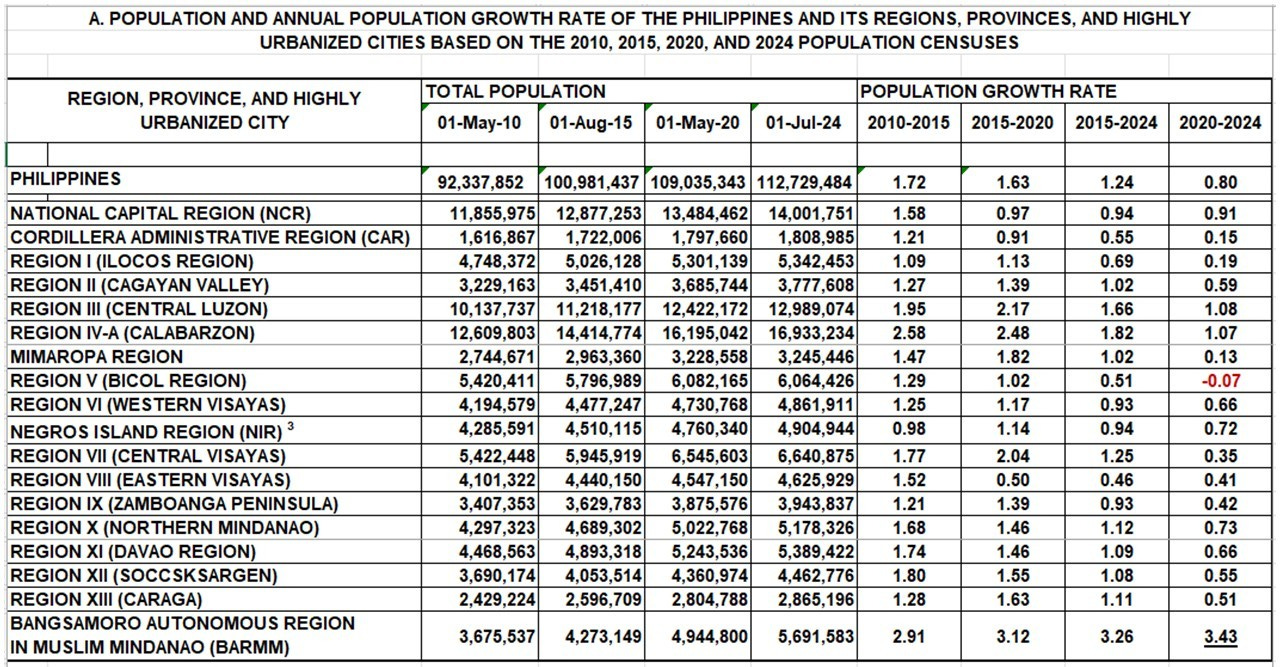

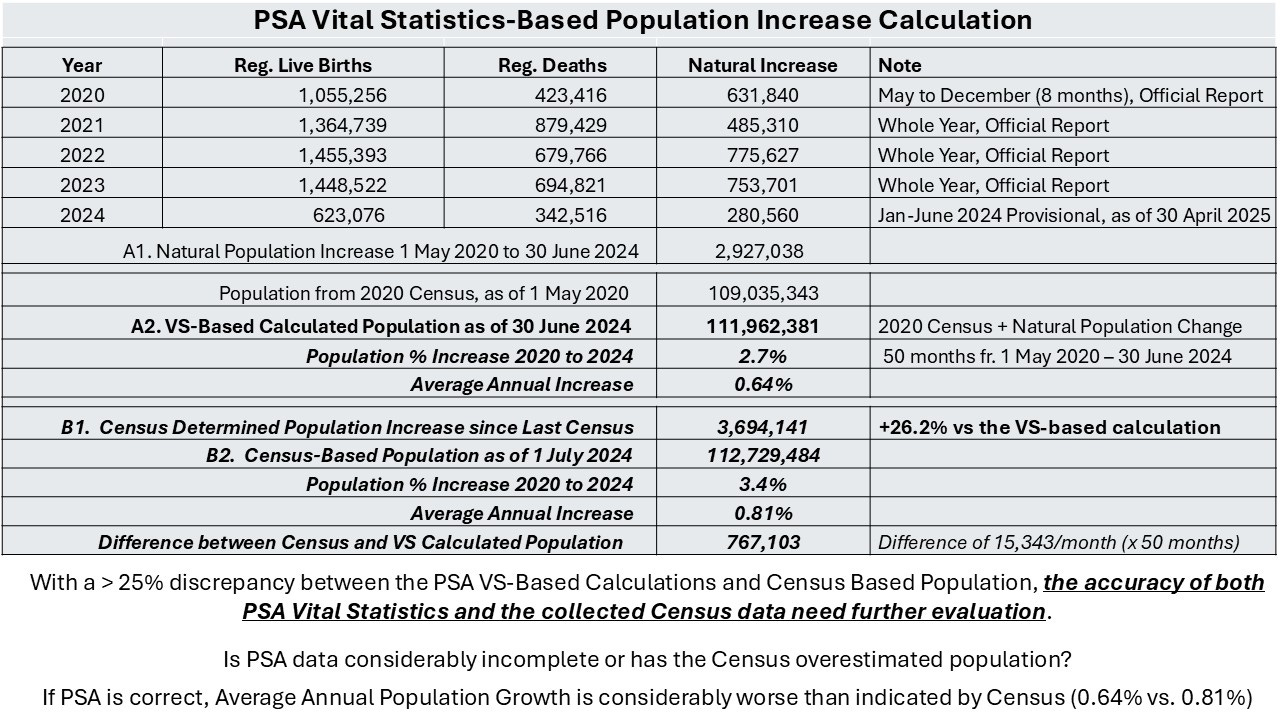
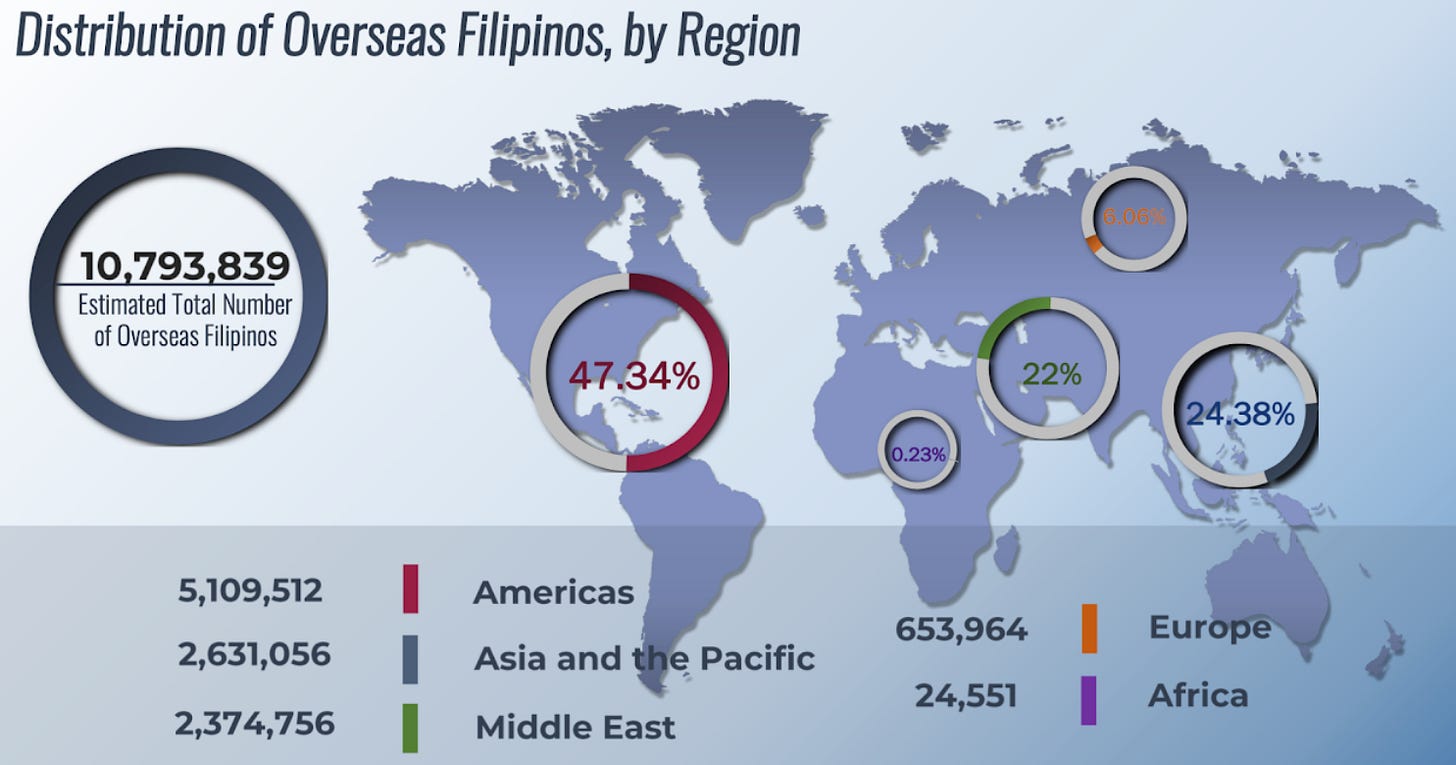
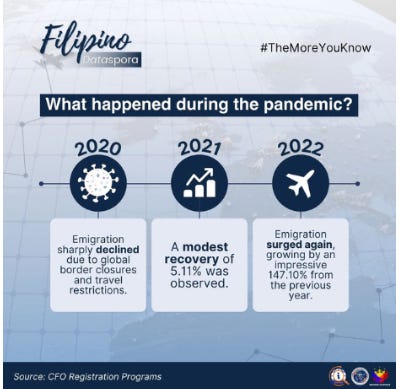
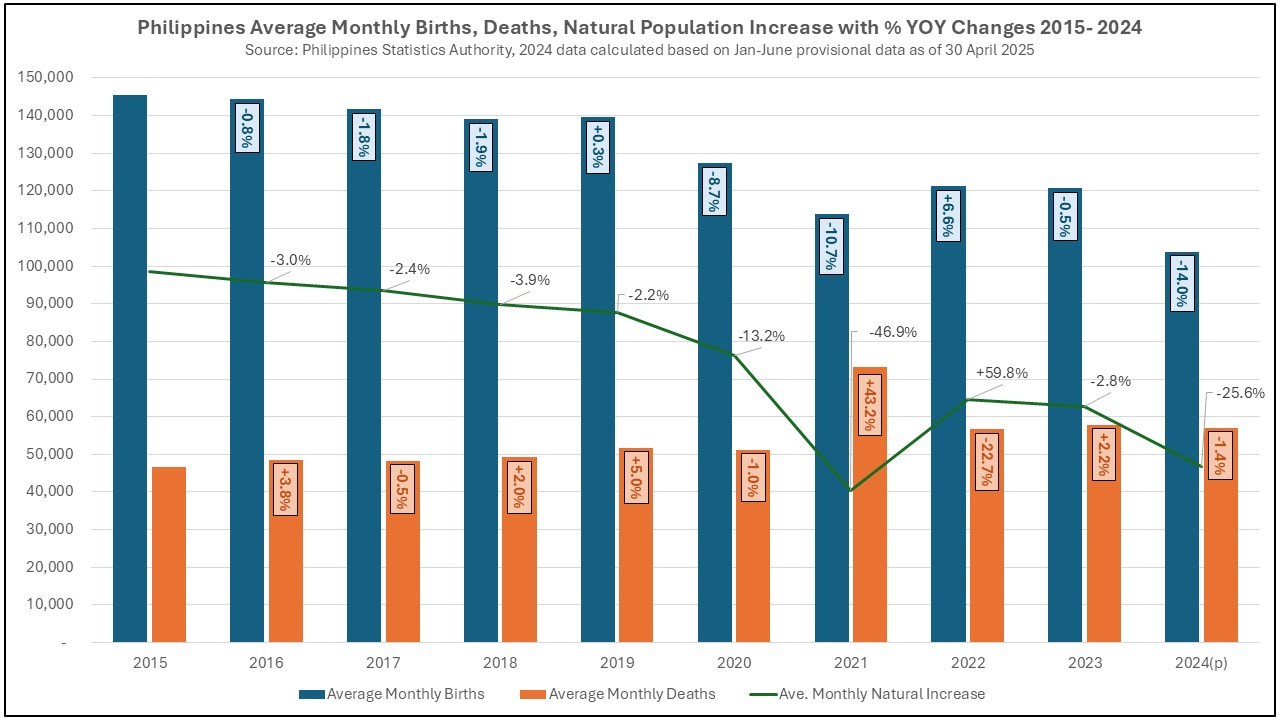



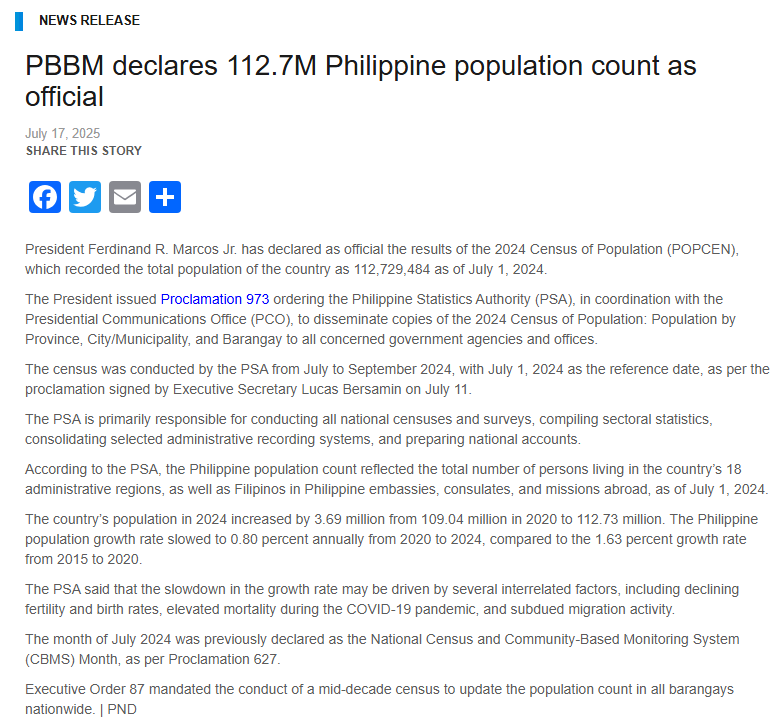
Thank you for collating these statistics. Your work is very valuable.
Please get the following information to all Philippine Political representatives; Thank you.
https://video.twimg.com/amplify_video/1946228724929626112/vid/avc1/1920x1080/VD45jAbRd_xTdIy9.mp4?tag=21